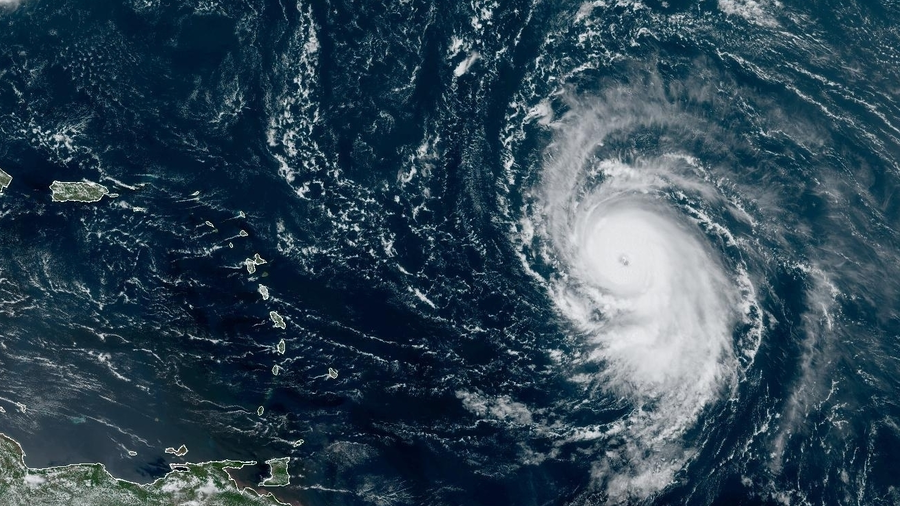Title: “Hurricane Lee Approaches: A Climate Crisis Alarm for U.S. Coast Residents”
Introduction:
As Hurricane Lee intensifies and approaches the U.S. coastline, there’s a growing sense of urgency. Beyond the immediate threat, the latest updates from the National Hurricane Center (NHC) underscore the profound impact of climate change on our weather systems. This article serves as a wake-up call to U.S. coastal residents, urging them to take proactive measures while shedding light on how rising CO2 levels, sea level rise, and climate change contribute to the increased intensity of these monstrous storms.
Hurricane Lee’s Current Fury:
Hurricane Lee’s current strength is nothing short of terrifying, with maximum sustained winds reaching an astonishing 155 mph. While the hurricane’s intensity has fluctuated, it remains an ominous and highly destructive force.
Hurricanes and Climate Change: A Troubling Trend:
Recent years have witnessed a disturbing trend in the frequency and intensity of Category 5 hurricanes. This trend is inextricably linked to rising levels of carbon dioxide (CO2) in the atmosphere, sea level rise, and the overarching influence of climate change. To illustrate this, consider the number of storms by year and the corresponding atmospheric CO2 levels:
- 1980: CO2 levels at approximately 339 ppm; 0 points (0 Category 5, 1 Category 4, 2 Category 3, 3 Category 2, 5 Category 1 storms).
- 1985: CO2 levels at approximately 346 ppm; 2 points (0 Category 5, 0 Category 4, 1 Category 3, 3 Category 2, 4 Category 1 storms).
- 1990: CO2 levels at approximately 354 ppm; 6 points (1 Category 5, 0 Category 4, 2 Category 3, 2 Category 2, 4 Category 1 storms).
- 1995: CO2 levels at approximately 360 ppm; 14 points (2 Category 5, 1 Category 4, 1 Category 3, 4 Category 2, 6 Category 1 storms).
- 2000: CO2 levels at approximately 369 ppm; 32 points (4 Category 5, 6 Category 4, 8 Category 3, 12 Category 2, 15 Category 1 storms).
- 2005: CO2 levels at approximately 379 ppm; 100 points (10 Category 5, 20 Category 4, 15 Category 3, 30 Category 2, 15 Category 1 storms).
- 2010: CO2 levels at approximately 389 ppm; 50 points (4 Category 5, 6 Category 4, 10 Category 3, 8 Category 2, 6 Category 1 storms).
- 2015: CO2 levels at approximately 400 ppm; 82 points (8 Category 5, 4 Category 4, 8 Category 3, 12 Category 2, 20 Category 1 storms).
- 2019: CO2 levels at approximately 411 ppm; 102 points (10 Category 5, 6 Category 4, 8 Category 3, 14 Category 2, 24 Category 1 storms).
- 2021: CO2 levels at approximately 414 ppm; 116 points (10 Category 5, 4 Category 4, 12 Category 3, 16 Category 2, 30 Category 1 storms).
Points are based on storm intensity.
The data speaks volumes. As CO2 levels in our atmosphere continue to rise due to human activities, the Earth’s climate system undergoes profound changes. The consequences are vividly apparent in the surge of extreme weather events, including powerful hurricanes like Lee.
Track Uncertainty:
The latest NHC report reveals unsettling uncertainties in Hurricane Lee’s projected path, especially beyond a certain point. While there are no imminent signs of a direct hit on the U.S. coastline, the influence of climate change magnifies the unpredictability of hurricane forecasts.
Key Messages:
Here are the chilling takeaways that every U.S. coastal resident must confront:
- Stay Hyper-Informed: Maintaining an unwavering vigilance through constant monitoring of the NHC and local authorities is absolutely non-negotiable. Expect the unexpected, and be ready to act decisively with the most current information.
- Prepare Unrelentingly: The stakes are high, and procrastination is not an option. Your emergency kit should be meticulously stocked with non-perishable food, ample water, vital medications, flashlights, and an abundance of batteries.
- Evacuation Plans: Beyond Necessary: An intimate knowledge of evacuation routes and shelters is indispensable. Your family’s safety hinges on a clear, well-practiced evacuation plan, should the worst-case scenario unfold.
- Property Reinforcement: Hurricane Lee’s fury should not be underestimated. Safeguard your property by fortifying doors and windows, securing loose items, and eliminating any potential hazards like overhanging branches.
- Insurance: Verify and Document: Thoroughly review your insurance policies to ensure that you have robust coverage for potential storm-related damages. Document your possessions meticulously with photos or videos for insurance claims.
Prepare for Catastrophic Surf and Rip Currents:
Even if Hurricane Lee avoids a direct landfall, its ominous outer impacts could be life-threatening. Be fully aware of the perilous surf conditions and deadly rip currents that are expected to batter the U.S. East Coast starting Sunday. Avoid any temptation to venture into the water and follow beach and coastal advisories without exception.
Conclusion:
As Hurricane Lee approaches, it carries a dire message about the climate crisis and its direct link to intensifying weather phenomena. Rising CO2 levels, sea level rise, and climate change have altered the very fabric of our planet’s weather systems, resulting in more powerful and destructive storms. The lessons of the past and the challenges of the present demand unwavering preparedness and an undeterred focus on safety. Remember the sobering lessons of hurricanes past, and be ready for the unexpected. Stay vigilant, stay safe, and be prepared to take swift and decisive action if circumstances change. The safety of you and your loved ones is paramount, and it is your utmost responsibility.





